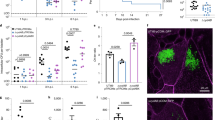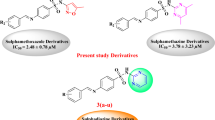Abstract
THE urease reaction has been used as a diagnostic method for a number of groups of bacteria. It is particularly useful in differentiating Proteus species from enteric pathogens1,2 and has also been used to differentiate Brucella suis from B. abortus and B. melitensis3. It also has been suggested that urease activity may serve as an indicator of pathogenic potential and of drug resistance among some groups of bacteria4–6. The urease activity of bacteria can readily be determined by inoculating the organisms on to a number of bacteriological media1,2. Seneca et al.6,7 reported that urease activity was observed in cell-free extracts obtained by sonic oscillation, even in groups characterized as lacking this enzyme by sensitive culture methods. The crude extracts such as were used in those investigations may contain large amounts of compounds which readily yield alkaline products; for example, extracts from enteric bacteria have been shown to produce amines from amino-acids8. Therefore, in order to eliminate spurious results, the more specific method involving reaction of acetylbenzoyl with urea has been used to determine urease activity of cell-free preparations9.
This is a preview of subscription content, access via your institution
Access options
Subscribe to this journal
Receive 51 print issues and online access
$199.00 per year
only $3.90 per issue
Buy this article
- Purchase on SpringerLink
- Instant access to full article PDF
Prices may be subject to local taxes which are calculated during checkout
Similar content being viewed by others
References
Stuart, C. A., Van Stratum, E., and Rustigan, R., J. Bact., 49, 437 (1945).
Christensen, W. B., J. Bact., 52, 461 (1946).
Pickett, M. J., Nelson, E. L., and Liberman, J. D., J. Bact., 66, 210 (1953).
Vallier, J., and Augagneur, J., C.R. Soc. Biol., Paris, 155, 1300 (1961).
Parnas, J., and Mierzejewski, T., Zbl. Bakt., I, Abt. Orig., 168, 572 (1957).
Seneca, H., Lattimer, J. K., and Peer, P., Amer. Med. Assoc. Arch. Pathol., 74, 489 (1962).
Seneca, H., Peer, P., and Nally, R., Nature, 193, 1106 (1962).
Møller, V., Acta Pathol. Microbiol. Scand., 34, 102 (1954).
Dickenman, R. C., Crafts, B., and Zak, B., Amer. J. Clin. Pathol., 24, 981 (1954).
Edwards, P. R., and Ewing, W. H., Identification of Enterobacteriaceae, second ed., 207 (Burgess Pub. Co., Minneapolis, 1962).
Author information
Authors and Affiliations
Rights and permissions
About this article
Cite this article
JEFFRIES, C. Intracellular Microbial Urease. Nature 202, 930 (1964). https://doi.org/10.1038/202930a0
Issue date:
DOI: https://doi.org/10.1038/202930a0
This article is cited by
-
Regulation of urea uptake inPseudomonas aeruginosa
Antonie van Leeuwenhoek (1992)
-
Control of urease formation in certain aerobic bacteria
Archiv f�r Mikrobiologie (1972)



